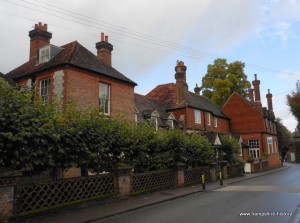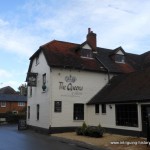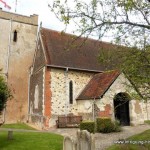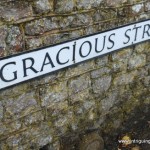Selborne is a village steeped in history, there is so much more to see and explore, besides the home of Gilbert White…
Selborne Parish is situated 4.5 miles from the town of Alton. It sits between a chalk hangar and a stream that eventually flows into the River Wey. The springs of clean chalk filtered water, probably gave rise to the settlement of Selborne.
In earlier times, its economy was centered on agriculture. The chalk hills and clay bottoms, was excellent for growing hops for brewing and hop kilns littered the area.
The geology of the Upper Greensand formation gave the village a robust building material and the remains of a quarry are still evident. The gault clay provided natural material for another occupational acivity, brick making. The Upper Greensand stone was used to line the kilns.
History Selborne:
- Wealden village once set in woodland, Woolmer Forest, with open common
- Archaeological evidence of Mesolithic and Neolithic settlement
- Bronze age barrows in vicinity
- Selborne Manor held by the King prior to Domesday
- Foundation of Selborne Priory AD 1231
- Knights Templar preceptory founded at nearby Southerington
- Brickworks established by C15th
- Gilbert White, naturalist becomes curate of St Marys mid C18th
- Swing riot in Selborne 1830
Hampshire Church:
- St Mary AD 1180
- Local stone known as ‘clunch’ used throughout the Norman nave
- White family memorials including one to Gilbert White, naturalist
Historic Buildings / Monuments:
St Mary’s Church. Called a Royal Foundation church because it is thought that the land the upon which it stands was given by Edith, the wife of Edward the Confessor. The church as it stands at present, was built AD1180. It replaced a former Saxon church that occupied the spot (mentioned in Domesday).
The Plestor. An area of land, which, in 1271, Adam Gurdon granted to the prior and convent to hold a market on. They had been granted a market by the gift of King Henry. The land was originally called ‘La Pleystowe’. They were granted permission to build houses and shops upon it, as long as they allowed the Gurdons passage to a tenement and some crofts at the upper end of the Plestor, near the churchyard.
The Grange
Wakes Museum
The Zigzag
Historic Events:
Swing riot 1830
- The Queens Pub Selborne
- St Mary’s Church Selborne
- Gracious St Selborne
Famous People:
Click on a name to discover more
- Adam de Gurdon C13th Knight and Highwayman
- Gilbert White Curate and naturalist
- Thomas Bell President of the Linnaean Society and Zoologist
Local Names:
Norton
Gurdon
White
Holdaway/Holloway
Maps:
Domesday:
Click here to see Selborne in the Domesday Book
Hampshire Archive:
Click here to see Hampshire Archive search results for Selborne
See Selborne on the Hampshire Timeline
Artefacts
Gilbert White’s book ‘The Natural History and Antiquities of Selborne’ download for free thanks to the ‘Gutenberg Project’
Hampshire Pubs Selborne
The Selborne Arms
Queens
Historic Selborne Walk
There are plenty of guides to historic walks in Selborne Hampshire. This one is available for download from East Hampshire District Council




